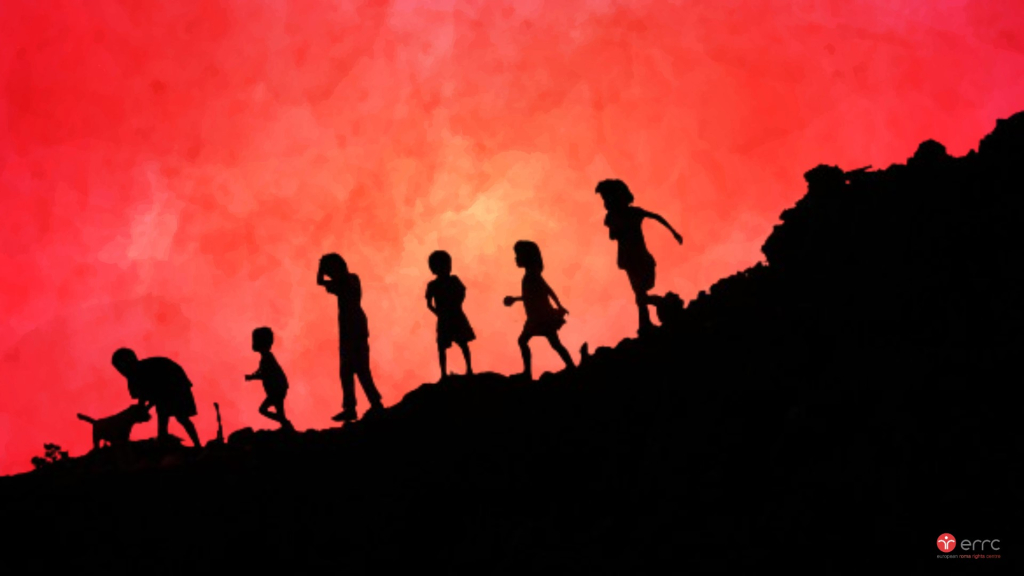New report decries Europe’s failure to respect the rights of Romani children
14 May 2024

According to a new report, the failure to take responsibility for realising the rights of Romani children across Europe means that millions still live in fear, poverty and hunger “just because their home State and non-Roma neighbours refuse to recognize them as equal citizens and innocent children entitled to our support, protection and respect.”
Europe’s Forgotten Children, a newly-published UNICEF report by Kevin Byrne, explores why, after twenty years of projects and programmes, so little progress has been made on closing ‘the well-being gaps’ between Roma and the rest of the population. Romani children remain the most vulnerable and rights-deprived child population in Europe. The social indicators of an estimated 4.5 million Romani children in Europe are, according to the Fundamental Rights Agency, “worse than those of Sierra Leone or Burundi, two of the poorest countries in the world”.
The report finds that right across Europe, discrimination against Roma is “an inherent feature of governance institutions, administrative structures, service delivery mechanisms and professional practice”. Antigypsyism needs to be countered actively, constantly and consistently, and the author calls for a critical realignment of the current child protection model to address “the massive ongoing violations of Roma children’s rights in Europe.”
While there is an increasing recognition of the need to examine social inequality through the lens of anti-Roma discrimination, Byrne asserts that there is no common understanding of the scope, depth or implications of antigypsyism for children and their rights. Such discrimination erodes the confidence of Roma children and challenges their resilience, according to Byrne:
“It weakens a child’s protective environment in various ways: it disrupts family life and community protection mechanisms; it denies the child access to wider social care and protection mechanisms; it depletes the family’s resources; and it undermines parents’ independence and self-sufficiency, limiting their capacity to provide for a child as they would wish.”
According to Byrne, the insitutional and structural discrimination, which takes a daily toll on the lives of Romani families and blocks their access to public services, is often exacerbated “by an insidious but frequently unrecognized bias prevalent in service-delivery personnel and professionals” which leaves them disinclined to facilitate Romani families’ access to their entitlements. A review of the literature over the past twenty years, “suggests that social services and child protection agencies across Europe have failed to support Roma families in times of crisis and, far from challenging the social exclusion of vulnerable Roma children, have often contributed to it.”
The report calls for an urgent revision of the current accepted frameworks of response to issues affecting Romani children, and for policy responses to shift to a decisively anti-discrimination model of work that challenges current institutional practices. European policy frameworks must recognize that children’s rights are indivisible, and that the rights of Romani children need to be vigorously defended, rather than “enabling national authorities to whittle away children’s entitlements with impunity.”
While the European Child Guarantee posits that entrenched social exclusion results from a combination of interlinked problems, such as unemployment, low incomes, poor housing, and bad health, the author maintains that for Roma, “this cycle of deprivation works in reverse … it is extreme social exclusion due to negative social attitudes and structural discrimination that leads to unemployment, poor skills, low income, bad health and family breakdown.” The report calls for specific strategies and targeted interventions because the racist exclusion faced by Roma families “has been deep, extensive and intergenerational.”
As for the EU Roma Strategic Framework 2020–2030, it is described as “neither child-focussed nor rights-oriented”, and as a consequence cannot be expected to lead in terms of addressing the many rights violations Romani children face. The success of European social inclusion models has been constrained by “the boundaries and limits imposed by structural discrimination and public prejudice”, and the author is clear a child-rights approach to social inclusion means putting the Convention on the Rights of the Child, rather than European law, at the core of all Roma child-related programming: “This should mean setting higher targets for national governments to achieve in relation to Roma children. These targets need to be based on the standards set for all children in the country, be aligned with the principles of the Convention and have a stronger gender focus.”
The author posits that over the past decades, responsibility on this issue has fallen between the two stools of Roma inclusion and child protection. In Roma inclusion frameworks, children’s rights and needs tend to be subsumed within a wider community-focussed approach; in the child rights sector, Romani children’s particular vulnerabilities can get lost within wider inclusion agendas. This is further compounded by ‘a design flaw’ which undercuts success rates of many initiatives, namely “insufficient acknowledgement of antigypsyism as the primary factor in violations of Roma children’s rights and failure to act strongly against it.”
The report calls on practitioners and advocates in all sectors to get outside their current comfort zones and engage in dialogue, learning and action across sectors; and to establish a continent-wide common framework to harness a wider coalition to ensure that Romani children and parents are heard and their views heeded at community, state and European levels, because “Romani families have been the shadow stakeholders for two decades and their voices need to be at the centre of this next phase of work.” Byrne makes a powerful case that a genuine movement, uniting families and communities with other actors, is needed to achieve full rights for every Romani child in every country in Europe.
The full report Europe’s Forgotten Children – Roma Children and their Families in Europe 2000–2020: A Child Rights Perspective can be accessed here.




